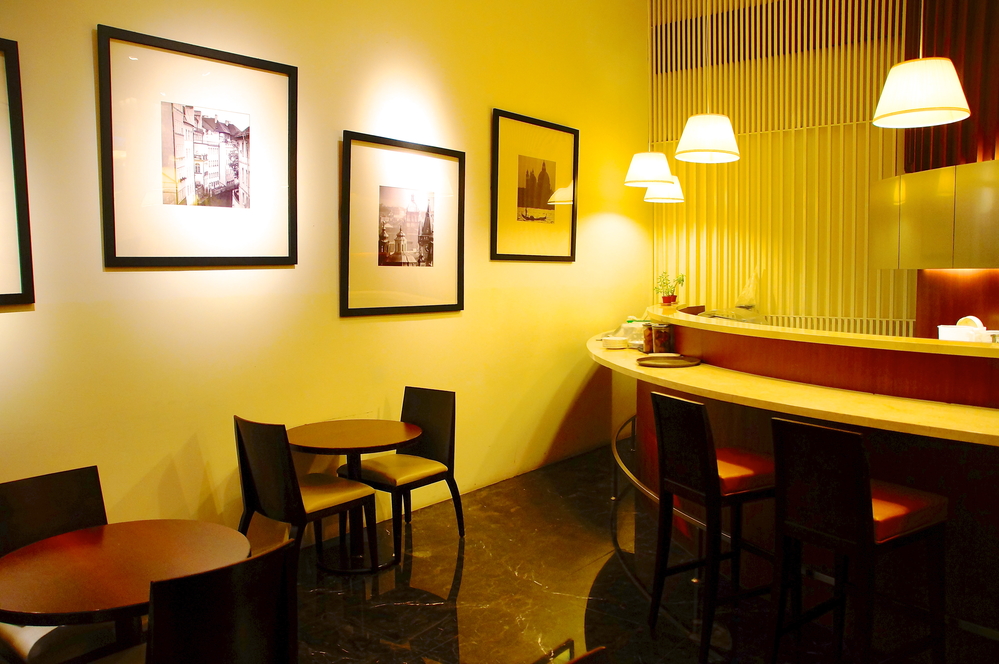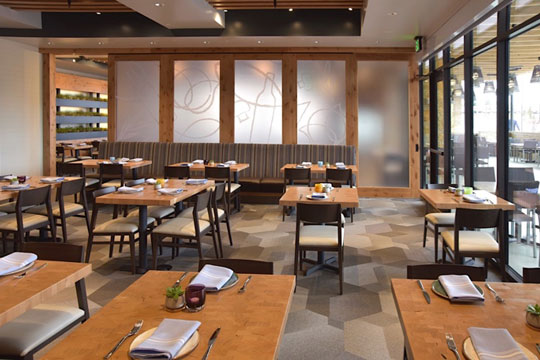Asian Restaurant ISB: A Must-Try Spot for Food Lovers in Islamabad
Asian Restaurant ISB: A Must-Try Spot for Food Lovers in Islamabad
Blog Article
Savor Genuine Oriental Food With a Pan-Asian Twist for a Cooking Adventure
Embarking on a cooking trip via genuine Eastern cuisine, improved with a Pan-Asian twist, offers an unique opportunity to discover the abundant tapestry of flavors that specify the area's diverse cooking practices. As you consider these attracting meals, think about the social narratives and historic impacts that shape them, each bite providing a tale waiting to be discovered. Romantic restaurants Islamabad.

Exploring Pan-Asian Tastes
In the realm of international gastronomy, Pan-Asian cuisine stands out for its impressive diversity and the unified interplay of tastes from different Eastern cultures. This cooking method commemorates the rich practices and distinct active ingredients located across the continent, developing a tapestry of tastes that is both interesting and gratifying. Secret to Pan-Asian food is its capability to stabilize contrasting flavors-- pleasant, salted, spicy, and sour-- while highlighting the quality and high quality of each ingredient.
From the umami-rich soy sauce of Japan to the fiery chili peppers of Thailand, Pan-Asian food offers a considerable palette of flavors. These aspects are often integrated in creative ways, enhancing meals with layers of intricacy. As an example, using aromatic natural herbs such as lemongrass and cilantro, usual in Vietnamese and Thai cuisine, includes a revitalizing illumination to dishes, while the incorporation of coconut milk provides a velvety, abundant appearance.
The focus on fresh fruit and vegetables and fragrant spices makes sure that each dish is not just a banquet for the preference buds yet also for the senses. Pan-Asian cuisine invites diners to start a culinary journey, checking out the huge and differed landscapes of Asian gastronomy with every bite.
Fusion Dishes to Try
While Pan-Asian cuisine is commemorated for its typical tastes, the contemporary cooking landscape is significantly accepting blend dishes that blend these timeless elements with impacts from various other areas. This innovative approach not only honors the abundant heritage of Oriental culinary arts yet likewise presents unique taste experiences that interest contemporary tastes buds.
An archetype of such a fusion meal is the Korean-Mexican taco, where marinated bulgogi beef is wrapped in a cozy tortilla, topped with kimchi and a hot gochujang-infused salsa. This mix marries the strong, savory flavors of Korea with the dynamic, fresh components of Mexican cuisine. In a similar way, sushi burritos have gotten popularity, integrating the delicate virtuosity of Japanese sushi with the hearty, hand-held ease of a burrito, usually including fusion active ingredients like tempura shrimp and avocado with a drizzle of wasabi mayo.
One more noteworthy dish is Thai curry ramen, which instills the velvety, aromatic spices of Thai curry right into the calming brew of typical Japanese ramen, developing a harmonious mix that tantalizes the detects. These combination dishes prolong beyond plain novelty; they represent a cooking dialogue in between cultures, encouraging exploration and technology in the world of Pan-Asian cuisine.
Essential Ingredients and Spices
To genuinely appreciate Pan-Asian food, one must understand the vital components and flavors that develop its structure. This varied culinary style draws from a rich tapestry of Oriental customs, utilizing an unified blend of textures and tastes. Trick active ingredients consist of soy sauce, fish sauce, and oyster sauce, which give a savory umami deepness necessary to Oriental meals. Complementary to these are rice vinegar and mirin, lending a fragile level of acidity and sweetness.
Aromatic elements are you could look here critical, with lemongrass, ginger, and garlic being common across various Pan-Asian dishes. These components offer a great smelling base that improves the complexity of tastes. Flavors such as star anise, cardamom, and cinnamon present warmth and personality, echoing influences from regions like China and India.

Food Preparation Strategies and Tips
Mastering the art of Pan-Asian cuisine needs knowledge with its unique food preparation techniques, each adding to the dynamic tapestry of tastes this culinary custom is commemorated for. Central to these methods is the stir-fry, a quick food preparation technique that maintains the dietary stability and brilliant colors of components. Using a wok, the stir-fry approach allows for even heat distribution, essential for accomplishing the characteristic structure and flavor equilibrium of Pan-Asian recipes.
Another fundamental technique is steaming, particularly prevalent in Chinese cuisine. This gentle method maintains the natural flavors and nutrients of components, making it suitable for fish and shellfish and veggies. Dumplings, a precious staple, usually profit from steaming, leading to soft, delicious appearances.
Cooking, also indispensable, presents smoky midsts to recipes such as Oriental bulgogi or Japanese yakitori (Instagrammable restaurants Islamabad). This method usually involves marinating components, enabling flavors to penetrate deeply before cooking over an open flame or hot plate
Last but not least, mastering the art of balancing tastes-- pleasant, sour, salted, bitter, and umami-- is essential. Effectively china star layering these aspects can elevate a recipe from average to extraordinary, supplying a facility and pleasing culinary experience that personifies the essence of Pan-Asian cuisine.
Dining Experiences Worldwide
Throughout the globe, Pan-Asian cuisine supplies an unmatched dining experience, celebrated for its rich tapestry of flavors and lively presentations. This culinary sensation has transcended social boundaries, capturing the hearts and tastes buds of food enthusiasts worldwide. In worldwide cities like New York, London, and Sydney, Pan-Asian restaurants work as fusions where cooking customs from Thailand, Japan, China, and past assemble, offering restaurants with an eclectic mix of recipes that highlight the region's variety.
The international allure of Pan-Asian cuisine hinges on its capability to supply both credibility and development. Cooks masterfully wed standard active ingredients such as lemongrass, soy sauce, and miso with contemporary strategies, leading to dishes that are both refreshingly brand-new and familiar. This fusion enables diners to start a culinary trip that values heritage while accepting modernity.
Moreover, eating visit experiences are boosted through thoughtfully designed environments that reflect the ethos of Pan-Asian appearances. From minimal Japanese-inspired insides to vivid Thai-themed rooms, each restaurant offers a distinct ambiance that complements the cooking offerings. As an outcome, clients are not simply taking in a meal but partaking in a cultural experience, making Pan-Asian dining a truly global phenomenon.
Conclusion
The expedition of Pan-Asian food provides an extensive understanding of the detailed interaction of tastes and culinary traditions throughout Asia. By accepting combination meals such as Thai curry ramen and sushi burritos, the cooking journey not only highlights the flexibility of conventional components however additionally showcases cutting-edge modern-day techniques. This gastronomic adventure, improved by vital seasonings and cooking approaches, provides a distinct opportunity to value the cultural variety and cooking creativity that specify Pan-Asian food on a worldwide range.
Embarking on a cooking journey via genuine Oriental cuisine, improved with a Pan-Asian twist, offers a distinct opportunity to explore the abundant tapestry of tastes that specify the region's varied cooking practices.In the realm of international gastronomy, Pan-Asian cuisine stands out for its impressive diversity and the unified interaction of flavors from numerous Asian cultures. Secret to Pan-Asian food is its capability to stabilize contrasting flavors-- pleasant, salted, spicy, and sour-- while highlighting the freshness and high quality of each active ingredient.

Report this page